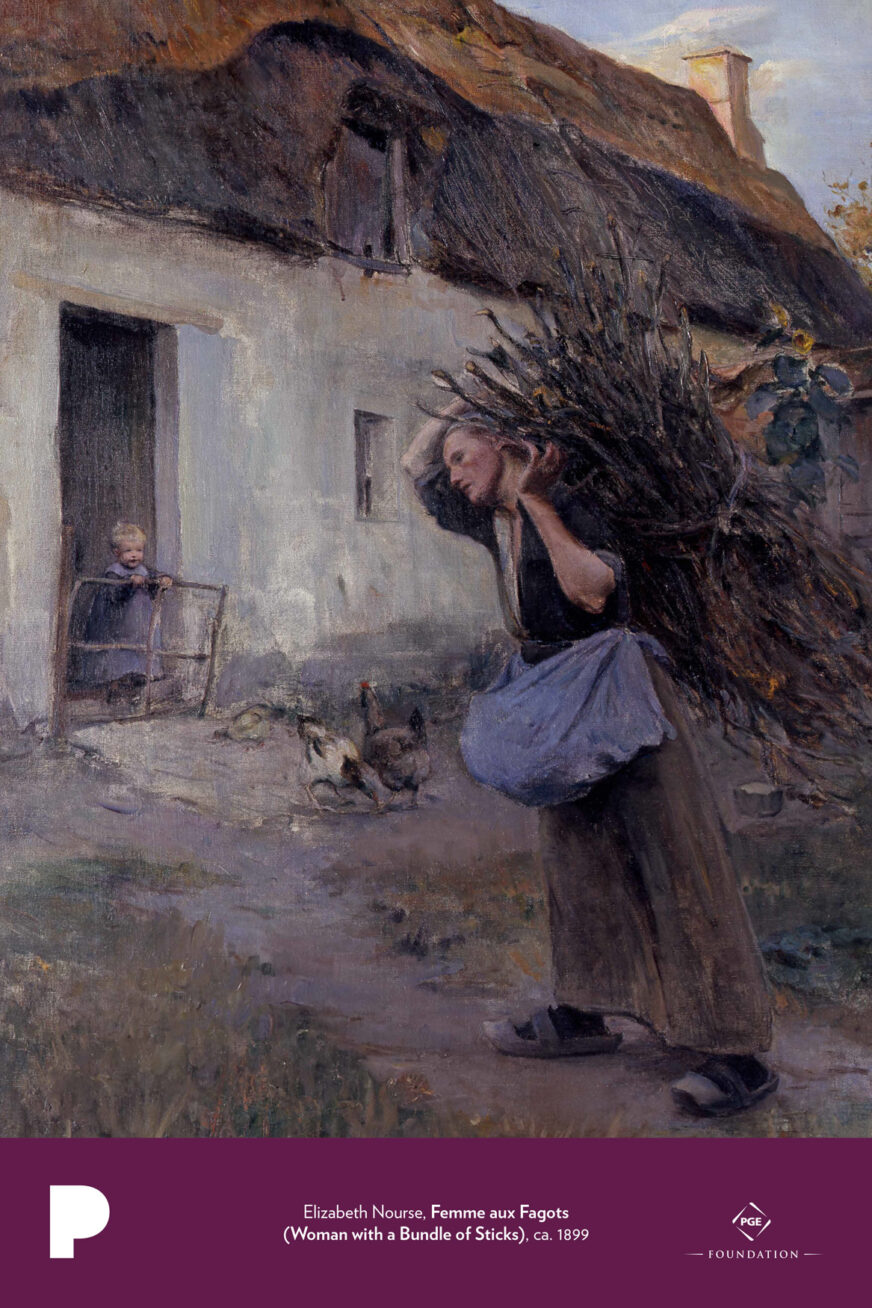
Elizabeth Nourse, like her friend Mary Cassatt, was one of the few women of her time to establish herself as an internationally respected and successful artist. Like Cassatt, Nourse primarily painted women engaged in everyday activities. While Cassatt focused her attention on the maternal and leisure pursuits of the middle and upper classes, Nourse chose to paint working women. She left her native Cincinnati, Ohio, in 1894 to settle permanently in France, where she often sketched and painted scenes from rural life. As in Femme Aux Fagots, these works tend toward the somber realism found in Jean-François Millet’s paintings which focus on the serious and melancholy toil of the rural population. Like Millet’s work, Nourse’s painting is without the veils of romance that often characterized the late-nineteenth-century view of peasant life.
Discussion and activities
- Who are these figures? What is their relationship? What are they doing? What happens next?
- Describe the setting. What time of day is it? Do you know a place like this or does this painting remind you of a place you’ve been?
- How do you feel when you look at this painting? Is this a happy scene? A sad scene? A hopeful scene? A scene of oppression? What details in the work lead you to this conclusion?
- Consider Nourse’s use of line, form, and color. Where does your eye move as you look at this image? In what direction are the lines going? If you step back from the image, what geometric shapes or patterns do you notice? What colors does Nourse include in this painting? Which areas are light and which are dark? How do all of these qualities contribute to the painting’s mood and meaning?